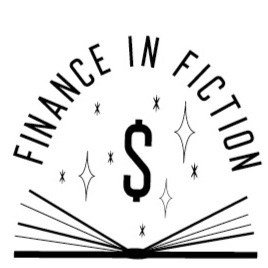South Park Series: The Marsh Family
Pre-2014:
The Marsh Family is probably my favorite of the series. Randy is delightfully pretentious, Sharon is pragmatic, and Stan is…the most normal, acting as the standard for neutral-good in the series. With 22 seasons, there was a lot of material to sift through and some interesting financial changes down the road. Randy is a bit of an entrepreneur, between purchasing (and burning down) a Blockbuster franchise, running a renovation company (called White People Renovating Houses), and spearheading a campaign to gentrify South Park (so that it would be worthy of a Whole Foods).
INCOME: $183,700
The Marshes are such an interesting family to work with because they have had some serious money success, even if it isn’t necessarily apparent in later seasons.
A senior geologist in Colorado makes about $94,000 a year, which after taxes and deductions is $4,900/month. Sharon works for Tom’s Rhinoplasty as a receptionist and brings in another $2,580/month ($1,800 after taxes).
EXPENSES: $77,750
Between the two kids and Grandpa, the Marsh home will need at least 4 bedrooms, as we see in the episode of Tegridy Farms. In the late 90s or early 2000s a similar home would have purchased for $192,000, at a monthly mortgage of $1,200 once you include taxes and such. Factor in internet, insurance, utilities, 5 phone lines, and a variety of tv options (DirecTV Premium package, Amazon Prime, Hulu, and Netflix) and they’re looking at another $630 in monthly expenses.
As a two-car household, auto expenses are going to run about $2,447 a month. Sounds high? Randy’s Lincoln Navigator will run $1,200 a month, and a Nissan Altima will be $466.
Post-2014:
Once Stan Marsh found newfound fame as Lorde, his net worth increased exponentially. In the episode “Freemium Isn’t Free,”it is suggested that a single song is worth at least $10,000. Lorde’s actual net worth is in the ballpark of $12 million, leaving plenty of excess capital for Stan’s various projects, the most notable being Tegridy Farms.
When the Marshes move to a farmhouse in rural Colorado, Stan has an opportunity to try his hand at marijuana farming. We can call it a hemp farm all we want; he’s growing with the intent to sell, hemp milk and t-shirts notwithstanding. Small time growers are finding it difficult to get a foothold in the market, but the amount of money available to him would make it possible to cover the high costs of an outdoor growing facility until he was able to recoup some costs. An acre produces 516lbs of marijuana per year (if outdoors), and at an average price of $2 wholesale per gram, revenue would be upwards of $4,681,000 (there are 453.6 grams in a pound). Production costs are roughly $.50/gram but can run much higher for indoor growers. Personally, I feel this is a bit low, especially considering the many capital expenditures a new farm would have to make (tractors, licensing costs, seed, fertilizer, tools, drainage, land prep, etc.) so I doubled that cost. Include a mortgage of $3,880 a month on a $520,000 farmhouse in Bennett, and expenses are probably at least $2.4 million. That’s a net income of at least $2.3 million per harvest. I think this is inordinately high, but it explains why that farmer is so happy. Even if costs are closer to $1.90/gram, that’s still a profit of over $193,000 a year – and that’s only using 10 acres of 30 on the farm.
**EDIT: A new season has come and gone, with Tegridy Farms front and center! As we find out, the farm has made more than $300,000 in its first year on the farm. Even though this is primarily used to celebrate the show’s 300th episode, it’s great to see the financial trajectory of the farm.
For most of us, the initial capital required and the risk involved with opening an outdoor growing facility would be insurmountable. For Mr. Lorde Marsh, he can focus on expensive passion projects without fear of being unable to provide for his family (and hopefully focus on paying off the farm expenses as quickly as possible). And honestly, I much prefer him teaching his son about ‘tegridy and the agricultural business model.
NET INCOME: $33,250 pre-2014; $12-16 million post-2014
I think we can take the Marsh Family incomes post-2014 with a grain of salt the size of a boulder. Randy Marsh is a spender, and I find it hard to believe that he wouldn’t ride the hedonic treadmill straight into hell if he could. Quitting your job to buy a weed farm is major money move, but it’s FIRE-crazy, not Dan Bilzerian-crazy.
Even if you strictly look at pre-2014 numbers, the Marshes are in a pretty good financial state. They have a very comfortable lifestyle, and have at least $10,000 in savings at any given time. They could be financially independent relatively quickly, provided Randy made some changes: cheaper cars, more savings, less drinking and gambling.
So that’s the South Park Series! What did y’all think? For now, I’ll leave it to just the Marshes and the Cartman family, but if you’re interested in others like Token, Butter, or Tweak, connect with me on social media, leave a comment, or drop me a line!
*As always, the numbers provided are estimations based on my knowledge of the content, a little research, and pure speculation. If you are interested in seeing the sources I used or the calculations I came up with, you can find the spreadsheet here. Want to see the finances of your favorite character? Submit here.











